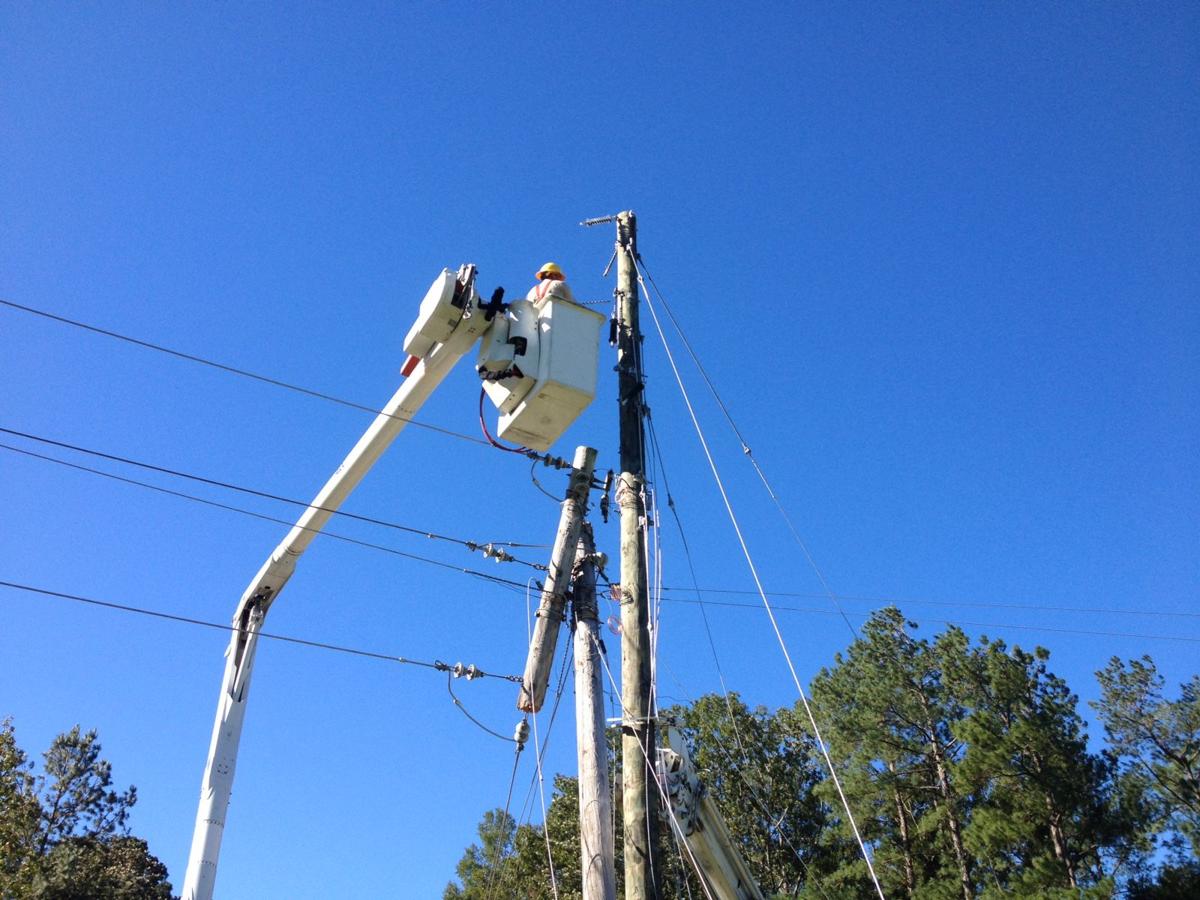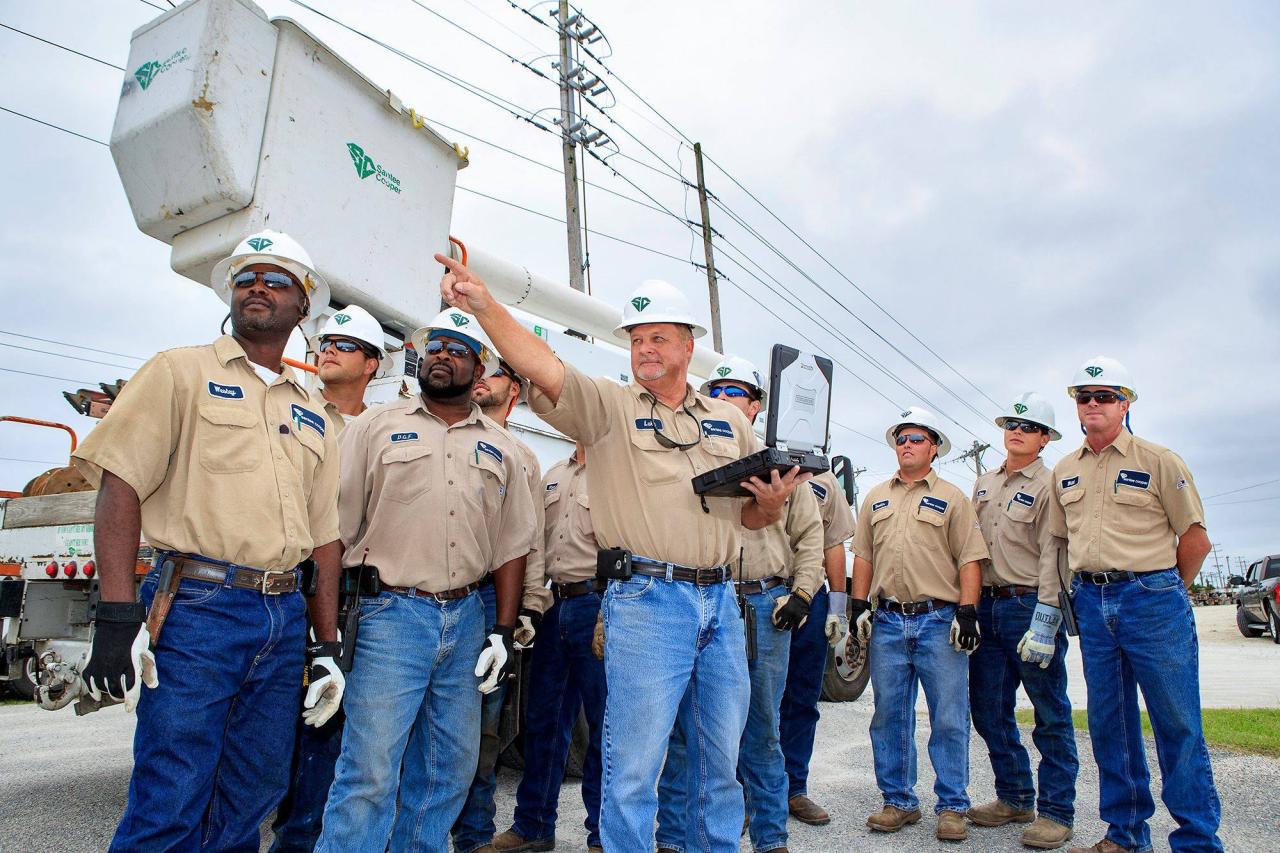
Santee Cooper Electric Company stands as a vital force in South Carolina, providing electricity to millions of residents and businesses. Established in 1939, the company’s roots are deeply intertwined with the state’s history, its mission evolving alongside the changing needs of its communities. From its early focus on hydroelectric power to its embrace of renewable energy sources, Santee Cooper has consistently adapted to meet the challenges and opportunities of the evolving energy landscape.
This exploration delves into the multifaceted world of Santee Cooper, examining its history, services, financial performance, economic impact, and future prospects. We’ll uncover how Santee Cooper has shaped South Carolina’s economic development, its commitment to environmental sustainability, and its ongoing efforts to ensure a reliable and affordable energy supply for its customers.
Santee Cooper History and Overview
Santee Cooper, a public power company based in South Carolina, boasts a rich history marked by significant milestones and a commitment to serving the state’s energy needs. Established in the 1930s during the Great Depression, Santee Cooper’s story is interwoven with the economic and social fabric of South Carolina.
Establishment and Early Years
Santee Cooper’s origins can be traced back to the 1930s, a time when South Carolina faced significant economic challenges. The state’s infrastructure was underdeveloped, and unemployment rates were high. In response to this dire situation, the South Carolina General Assembly authorized the creation of the Santee Cooper project, a massive undertaking designed to stimulate economic growth through the development of hydroelectric power and related infrastructure.
- 1934: The South Carolina General Assembly passed the Santee-Cooper Act, authorizing the creation of the Santee Cooper project. This act established the Santee Cooper Authority, a public entity tasked with overseeing the project’s development and operation.
- 1939: Construction began on the Santee Cooper project, which involved building two hydroelectric dams on the Santee and Cooper rivers. The project was a massive undertaking, requiring significant investment and a large workforce.
- 1942: The first hydroelectric unit at the Santee Dam began generating power, marking a significant milestone in the project’s development. This marked the beginning of Santee Cooper’s role as a provider of electricity to South Carolina.
Original Purpose and Mission
Santee Cooper was initially conceived as a multifaceted project with the primary objective of stimulating economic development in South Carolina. Its mission encompassed several key aspects:
- Hydroelectric Power Generation: The project’s core objective was to harness the power of the Santee and Cooper rivers to generate electricity, providing a reliable and affordable source of energy for the state.
- Infrastructure Development: Santee Cooper was tasked with developing essential infrastructure, including power lines, transmission networks, and other related facilities, to facilitate the distribution of electricity throughout the state.
- Economic Growth: By providing a reliable and affordable source of power, Santee Cooper aimed to attract industries and businesses to South Carolina, creating jobs and stimulating economic growth.
Evolution of Santee Cooper’s Role
Over the decades, Santee Cooper’s role has evolved significantly, adapting to changing energy needs and technological advancements. While its core mission of providing reliable and affordable electricity remains central, Santee Cooper has expanded its operations to include:
- Natural Gas Power Generation: Recognizing the need for a diversified energy portfolio, Santee Cooper has invested in natural gas-fired power plants, adding a cleaner and more efficient source of energy to its mix.
- Renewable Energy: Santee Cooper has embraced renewable energy sources, including solar and wind power, demonstrating its commitment to environmental sustainability and reducing its carbon footprint.
- Energy Efficiency Programs: Santee Cooper actively promotes energy efficiency programs to help customers reduce their energy consumption and save money. These programs include rebates for energy-efficient appliances, home energy audits, and educational resources.
Organizational Structure and Key Leadership Figures
Santee Cooper is a public entity governed by a board of directors appointed by the South Carolina General Assembly. The board oversees the company’s operations and sets its strategic direction.
- Board of Directors: The board of directors comprises individuals with expertise in various fields, including finance, law, and energy. The board’s primary responsibility is to ensure that Santee Cooper operates in a fiscally responsible manner and meets the needs of its customers.
- Management Team: Santee Cooper is led by a professional management team, which is responsible for the day-to-day operations of the company. The management team includes executives with experience in power generation, transmission, distribution, and customer service.
Santee Cooper Services and Operations
Santee Cooper, a state-owned electric and water utility, provides a range of services to its customers in South Carolina. These services encompass electricity generation, transmission, and distribution, as well as water and wastewater treatment and distribution.
Electricity Generation and Distribution
Santee Cooper operates a diverse portfolio of power plants to meet the electricity demands of its customers. These plants utilize various fuel sources, including coal, natural gas, nuclear, and renewable energy. The company is committed to providing reliable and affordable electricity while also exploring ways to reduce its environmental impact.
Types of Power Plants
Santee Cooper operates a variety of power plants, each with its unique characteristics and fuel source.
- Coal-fired Power Plants: Santee Cooper operates several coal-fired power plants, which are a major source of electricity generation for the company. These plants are typically large and have high generating capacity. However, coal-fired power plants are also a significant source of greenhouse gas emissions.
- Natural Gas-fired Power Plants: Santee Cooper has also invested in natural gas-fired power plants, which are considered a cleaner alternative to coal. Natural gas power plants emit fewer greenhouse gases than coal-fired plants and can be more flexible in meeting fluctuating energy demands.
- Nuclear Power Plants: Santee Cooper operates the only nuclear power plant in South Carolina, which provides a significant portion of the state’s electricity. Nuclear power plants are known for their low greenhouse gas emissions but also raise concerns about nuclear waste disposal and potential safety risks.
- Renewable Energy Sources: Santee Cooper is committed to expanding its renewable energy portfolio. The company has invested in solar, wind, and biomass power plants, which contribute to a more sustainable energy future.
Renewable Energy and Energy Efficiency Initiatives
Santee Cooper actively pursues renewable energy and energy efficiency initiatives to reduce its environmental impact and meet growing customer demand for sustainable energy solutions.
- Solar Energy: Santee Cooper has installed numerous solar farms across South Carolina, generating clean and renewable energy. The company is also promoting rooftop solar installations for residential and commercial customers.
- Wind Energy: Santee Cooper has explored opportunities for wind energy development in South Carolina, but the state’s geography presents challenges for large-scale wind power generation.
- Energy Efficiency Programs: Santee Cooper offers various energy efficiency programs to help customers reduce their energy consumption and save money. These programs include rebates for energy-efficient appliances, home energy audits, and educational resources on energy conservation.
Customer Service and Engagement
Santee Cooper is dedicated to providing excellent customer service and engaging with its customers. The company offers various channels for customer interaction, including online portals, mobile apps, and telephone support. Santee Cooper also actively participates in community events and outreach programs to build relationships with its customers and address their concerns.
Santee Cooper’s Financial Performance and Regulation: Santee Cooper Electric Company

Santee Cooper, a state-owned electric and water utility in South Carolina, faces a complex financial landscape shaped by its unique ownership structure, regulatory oversight, and the evolving energy industry. This section delves into Santee Cooper’s financial performance, regulatory environment, and key challenges and opportunities.
Financial Performance Analysis
Santee Cooper’s financial performance is a crucial indicator of its operational efficiency and ability to meet its obligations to customers and stakeholders. Analyzing key financial metrics like revenue, expenses, and debt levels provides insights into the company’s financial health and its capacity for future growth.
Revenue and Expenses
Santee Cooper’s revenue primarily comes from the sale of electricity to residential, commercial, and industrial customers. In recent years, Santee Cooper has experienced fluctuations in revenue due to factors such as changes in energy consumption patterns, economic conditions, and competition from other utilities. The company’s expenses include operating costs, such as fuel, labor, and maintenance, as well as debt service and capital expenditures.
Debt Levels
Santee Cooper’s debt levels have been a subject of scrutiny in recent years. The company has a significant amount of debt, primarily incurred for capital projects, such as power plants and transmission infrastructure. Managing debt levels is crucial for maintaining financial stability and ensuring that Santee Cooper can continue to meet its obligations.
Regulatory Environment
Santee Cooper operates within a regulated environment, subject to the oversight of the South Carolina Public Service Commission (PSC). The PSC’s role is to ensure that Santee Cooper provides safe, reliable, and affordable electricity to its customers while operating in a financially sound manner.
South Carolina Public Service Commission
The South Carolina Public Service Commission (PSC) is a regulatory body responsible for overseeing the state’s public utilities, including Santee Cooper. The PSC has broad authority to set rates, approve capital expenditures, and review Santee Cooper’s financial performance. The PSC conducts regular reviews of Santee Cooper’s operations and financial statements to ensure compliance with state regulations and protect the interests of consumers.
Impact of Regulation
The regulatory environment significantly impacts Santee Cooper’s operations. The PSC’s oversight of rates and capital expenditures limits Santee Cooper’s flexibility in setting prices and investing in new projects. However, regulation also provides Santee Cooper with a stable and predictable operating environment, ensuring a steady stream of revenue and protecting the company from excessive competition.
Financial Challenges and Opportunities, Santee cooper electric company
Santee Cooper faces several financial challenges and opportunities in the coming years. These challenges and opportunities are shaped by factors such as the transition to cleaner energy sources, the evolving regulatory landscape, and the need to modernize its infrastructure.
Key Financial Challenges
- Transition to Clean Energy: Santee Cooper is facing the challenge of transitioning to cleaner energy sources while maintaining affordability for its customers. This transition requires significant investments in renewable energy technologies and potentially the retirement of older, coal-fired power plants.
- Debt Management: Santee Cooper’s high debt levels pose a financial challenge, particularly in light of rising interest rates. Managing debt levels effectively is crucial for maintaining financial stability and ensuring that the company can continue to meet its obligations.
- Regulatory Uncertainty: The regulatory environment is constantly evolving, creating uncertainty for Santee Cooper. Changes in regulations, such as those related to renewable energy and carbon emissions, can significantly impact the company’s operations and financial performance.
Key Financial Opportunities
- Growth in Renewable Energy: Santee Cooper has an opportunity to capitalize on the growing demand for renewable energy by investing in solar, wind, and other clean energy technologies. This investment can enhance its competitive position and attract new customers.
- Energy Efficiency: Santee Cooper can pursue energy efficiency initiatives to reduce customer demand and lower costs. This can lead to lower operating expenses and improved financial performance.
- Technological Advancements: Santee Cooper can leverage technological advancements, such as smart grids and distributed energy resources, to improve efficiency, reliability, and customer service. These advancements can enhance the company’s competitive advantage and attract new customers.
Santee Cooper’s Impact on the South Carolina Economy

Santee Cooper, as a major power provider in South Carolina, has a significant impact on the state’s economy. The company’s operations, investments, and partnerships contribute to various sectors, fostering economic growth and development.
Santee Cooper’s Economic Impact on South Carolina
Santee Cooper’s operations generate substantial economic activity in South Carolina. The company’s direct investments in power generation, transmission, and distribution infrastructure create jobs and stimulate economic growth.
- Santee Cooper is a major employer in the state, providing employment opportunities for thousands of South Carolinians. This workforce contributes significantly to the state’s economy through salaries, wages, and local spending.
- The company’s power generation facilities and transmission lines require substantial capital investments, which support various industries involved in construction, engineering, and manufacturing.
- Santee Cooper’s operations also stimulate economic activity in the tourism and recreation sectors, as its hydroelectric facilities attract visitors and contribute to the state’s tourism revenue.
Santee Cooper’s Role in Supporting Local Communities
Santee Cooper recognizes its responsibility to support the communities it serves. The company actively participates in community development initiatives, providing financial assistance and resources to local organizations and projects.
- Santee Cooper’s economic development programs provide grants and loans to businesses, promoting job creation and economic growth in local communities.
- The company supports educational programs and initiatives, investing in STEM education and workforce development to prepare South Carolinians for future employment opportunities.
- Santee Cooper also engages in community outreach programs, providing support to local organizations and charities, and sponsoring community events.
Santee Cooper’s Environmental Impact
Santee Cooper’s power generation activities have environmental implications. The company is committed to mitigating these impacts and implementing sustainable practices to minimize its environmental footprint.
- Santee Cooper has invested in renewable energy sources, such as solar and wind power, to diversify its energy portfolio and reduce its reliance on fossil fuels.
- The company has implemented environmental protection programs to minimize air and water pollution, protect wildlife habitats, and conserve natural resources.
- Santee Cooper actively participates in environmental stewardship initiatives, working with local communities and organizations to promote environmental awareness and sustainability.
Santee Cooper’s Contribution to Economic Development Goals
Santee Cooper plays a crucial role in supporting South Carolina’s economic development goals. The company’s infrastructure investments, energy services, and commitment to sustainability contribute to the state’s overall economic competitiveness and growth.
- Santee Cooper’s reliable and affordable energy services attract businesses and industries to South Carolina, creating new jobs and boosting the state’s economy.
- The company’s investments in renewable energy infrastructure support the state’s transition to a cleaner and more sustainable energy future, attracting businesses and industries seeking environmentally responsible energy sources.
- Santee Cooper’s commitment to environmental stewardship enhances the state’s reputation as a desirable location for businesses and residents, contributing to overall economic development.
Santee Cooper’s Future and Challenges

Santee Cooper, like all electric utilities, faces a dynamic landscape shaped by evolving energy trends and technological advancements. The company’s ability to adapt and innovate will be crucial to its long-term success.
The Rise of Renewable Energy and Grid Modernization
The electric utility industry is undergoing a significant transformation driven by the growing adoption of renewable energy sources and the need for grid modernization. Renewable energy, particularly solar and wind power, is becoming increasingly cost-competitive with traditional fossil fuels, leading to a shift in the energy mix. Simultaneously, the electric grid is evolving to accommodate the influx of distributed generation, enhance reliability, and improve efficiency.
The Impact on Santee Cooper
These trends present both opportunities and challenges for Santee Cooper. The company must navigate the transition to a cleaner energy future while ensuring the reliability and affordability of electricity for its customers.
A Roadmap for Adaptation and Sustainability
Santee Cooper can adapt to these challenges and achieve long-term sustainability by implementing a comprehensive roadmap that includes:
Investing in Renewable Energy
Santee Cooper has already begun to invest in renewable energy projects, such as solar farms. The company can further expand its portfolio of renewable energy assets by:
- Developing new solar and wind power projects
- Partnering with private developers to leverage their expertise and capital
- Exploring innovative renewable energy technologies, such as energy storage
Modernizing the Grid
Santee Cooper can enhance the reliability and efficiency of its grid by:
- Upgrading transmission and distribution infrastructure
- Implementing advanced metering infrastructure (AMI)
- Integrating smart grid technologies to optimize grid operations
Enhancing Energy Efficiency
Santee Cooper can reduce energy demand and lower costs for its customers by:
- Offering energy efficiency programs and rebates
- Promoting the adoption of energy-efficient appliances and technologies
- Working with businesses and industries to reduce their energy consumption
Embracing Digital Transformation
Santee Cooper can leverage digital technologies to improve customer service, enhance operational efficiency, and develop new business models.
- Implementing customer relationship management (CRM) systems
- Developing mobile apps and online portals for customer interactions
- Exploring blockchain technology for energy trading and management
Opportunities for Innovation and Expansion
Santee Cooper can expand its business model by:
- Providing energy storage services to businesses and communities
- Developing microgrids to enhance energy resilience and reliability
- Offering electric vehicle charging infrastructure
- Exploring new markets, such as energy efficiency consulting and renewable energy development
Conclusive Thoughts
As Santee Cooper navigates the dynamic energy sector, it faces both challenges and opportunities. The company’s commitment to innovation, sustainability, and community engagement positions it for a future that balances economic growth with environmental responsibility. By understanding the factors that shape Santee Cooper’s trajectory, we gain valuable insights into the future of energy in South Carolina and beyond.
FAQ Overview
What is Santee Cooper’s role in renewable energy?
Santee Cooper is committed to expanding its renewable energy portfolio, investing in solar, wind, and other sustainable energy sources to reduce its carbon footprint and provide cleaner energy options for its customers.
How does Santee Cooper compare to other electric utilities in the region?
Santee Cooper is a major player in the Southeast, known for its large-scale power generation capacity and its commitment to innovation. It is often compared to other utilities in the region, including Duke Energy and Dominion Energy, based on its size, service area, and operational performance.
What are the biggest challenges facing Santee Cooper in the future?
Santee Cooper faces a number of challenges, including the need to adapt to a rapidly changing energy landscape, manage the transition to a cleaner energy future, and maintain affordability for its customers in the face of rising costs.




